#Turkish Language Classes in Delhi
Explore tagged Tumblr posts
Text
Unveiling the Top 10 Foreign Language Institutes in Delhi: Your Gateway to Global Linguistic Proficiency

In today's interconnected world, proficiency in foreign languages has become a valuable asset, opening doors to diverse opportunities in career, education, and personal growth. For language enthusiasts residing in Delhi, the capital city offers a plethora of options to master a new tongue. Whether you aspire to learn French, Spanish, German, or Mandarin, Delhi's language institutes boast exceptional courses tailored to suit various learning needs. Join us as we unveil the top 10 foreign language institutes in Delhi, each renowned for its excellence in imparting linguistic skills and cultural understanding.
Institute of Spanish Studies (ISS): Recognized for its immersive teaching approach and experienced faculty, ISS stands out as a premier destination for learning Spanish in Delhi. From beginner to advanced levels, their comprehensive courses cater to all proficiency levels.
Alliance Française de Delhi (AFD): As the official French cultural center, AFD offers accredited French language courses conducted by native-speaking instructors. With a rich array of cultural events and resources, AFD provides a vibrant learning environment.
Max Mueller Bhavan (Goethe-Institut): Renowned for its rigorous German language programs, Max Mueller Bhavan is a hub of German language and cultural activities in Delhi. Their courses are structured to enable students to achieve proficiency in reading, writing, speaking, and comprehension.
Confucius Institute, Jawaharlal Nehru University (CI-JNU): Affiliated with the prestigious JNU, CI-JNU is dedicated to promoting Chinese language and culture. With state-of-the-art facilities and expert faculty, it offers Mandarin courses tailored to diverse learner requirements.
Japanese Language School, Delhi (JLSD): For those inclined towards mastering Japanese, JLSD is the go-to destination. With a focus on practical language skills and cultural nuances, their courses equip students for success in the competitive world of Japanese proficiency exams.
Russian Centre of Science and Culture (RCSC): Specializing in Russian language education and cultural exchange, RCSC offers structured courses designed to develop proficiency in speaking, reading, and writing Russian. Their faculty comprises experienced linguists and native speakers.
Inlingua International School of Languages: With a global presence, Inlingua is renowned for its proficiency-based language training methodology. In Delhi, their language center offers courses in multiple languages, including Italian, Portuguese, and Arabic, among others.
Spanish Institute of Delhi (SID): As a dedicated institution for Spanish language education, SID offers flexible courses catering to diverse learner needs. Their interactive classes and emphasis on real-world communication skills set them apart.
Language Pantheon: Known for its personalized approach and small class sizes, Language Pantheon offers courses in a wide range of foreign languages, including Korean, Arabic, and Turkish. Their experienced instructors focus on building strong linguistic foundations.
Italian Embassy Cultural Centre (Istituto Italiano di Cultura): For enthusiasts of Italian language and culture, the Italian Embassy Cultural Centre is the ideal destination. Their courses cover all levels of proficiency, from basic to advanced, and are complemented by cultural events and resources.
Embark on your journey to linguistic proficiency and cultural enrichment by enrolling in one of these top foreign language institutes in Delhi. Whether you're pursuing language learning for academic, professional, or personal reasons, these institutes offer the expertise and resources to help you achieve your goals. Expand your horizons and embrace the world of languages right here in the heart of Delhi! https://institutesindelhi.com/top-10-foreign-language-institutes/
0 notes
Text
Turkish language course in Delhi
Learning an exciting language such as Turkish is a beautiful experience; every level brings unique learning. So, learn the necessary skills to communicate effectively in Turkish from the leading institute – IBL Classes. The experienced team of faculty in IBL Classes will teach you the Turkish language course in Delhi, effectively, and in a fun way by using rapid language learning techniques.

0 notes
Link
As we know that Turkish Languages are well spoken in India and Nepal and enabling students to get a better education and career paths. So if you are looking for the best career options in the Turkish Language Classes in Delhi NCR. Contact us by email for the free session.
#Turkish Institute in Delhi NCR#Online Turkish Classes in Delhi NCR#Turkish Course in Delhi NCR#Turkish Language Classes in Delhi NCR
0 notes
Text
WORLD LITERATURE
Each literature signifies our nations even our culture, it has its own artistic and national features. It is essential to study our world as it helps us to understand more, the life and people with different perspectives. It forms our world outlook and familiarize us with the masterpieces of their literature.
a.) Southeast Asia - The entire region of Southeast Asia, with the exception of Thailand due to it’s not a country yet; fell under colonial rule. From this we could actually perceived even from the word “under colonial rule” that they were oppressed. The historical experiences of people have been deeply intertwined for centuries. Colonialism has altered Southeast Asian social structure and brought modern western ideas and concepts into society as well. Most of their literatures are actually consists of how they were repressed those dark times, the reason why their literature reflects their philosophies of life, and the struggles and success of their developing nations and its people.
Some Southeast Asian Literature:

Jose Protacio Rizal Mercado Y Alonso Realonda
- Was a Filipino nationalist and polymath during the tail end of the Spanish colonial period of the Philippines. He is tagged as the national hero (pambansang bayani) of the Filipino people. An ophthalmologist by profession, Rizal became a writer and a key member of the Filipino Propaganda Movement, which advocated political reforms for the colony under Spain. He was executed by the Spanish colonial government for the crime of rebellion after the Philippine Revolution, inspired in part by his writings, broke out.
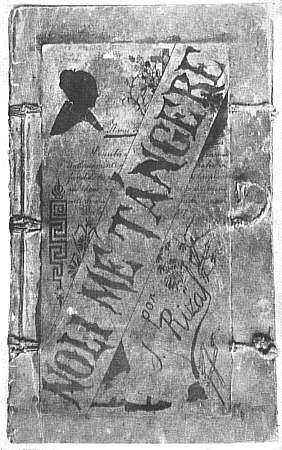
- Noli Me Tangere Together with its sequel, El Filibusterismo are widely considered as the national epic of the Philippines. Jose Rizal conceived the idea of writing the novel that would expose the ills of Philippines society and he preferred that the prospective novel express the way Filipino culture was perceived to be backward and anti-progress.
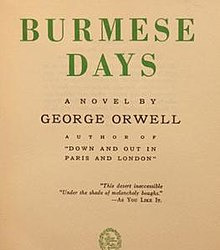
- Burmese Days, first novel by English writer George Orwell, set in British Burma during the waning days of Empire, when Burma was ruled from Delhi as part of British India, it is "a portrait of the dark side of the British Raj."
b.) East Asia - It includes Chinese, Japanese, Korean, Mongolian, Taiwanese Literature. East Asian literature reached prominence in the Literary World. The literatures of East Asia are drawing inspirations from pluralistic sources, within as well as beyond their region. The Chinese literary norms, canons of poetry, lyrical prose and classical novels have shaped the literary taste of the gentry and the ruling class of East Asian countries, especially Japan and Korea. Modern literature in East Asia subsequently developed along a more dichotomized east/west traditional/modern path. The spread of World Literature is heavily dependent on translation. In the case of East Asia, the language of literature was largely monolingual in classical times.
Some East Asian Literature:

Tale of Genji - a classic work of Japanese literature written in the early 11th century by the noblewoman and lady-in-waiting Murasaki Shikibu. The tale concentrates on Genji's romantic life and describes the customs of the aristocratic society of the time. It may be the world's first novel, the first modern novel, the first psychological novel or the first novel still to be considered a classic

The Vegetarian - A South Korean three-part novel written by Han Kang and first published in 2007. Based on Han's 1997 short story "The Fruit of My Woman", The Vegetarian is set in modern-day Seoul and tells the story of Yeong-hye, a part-time graphic artist and home-maker, whose decision to stop eating meat after a bloody, nightmarish dream about human cruelty leads to devastating consequences in her personal and familial life.
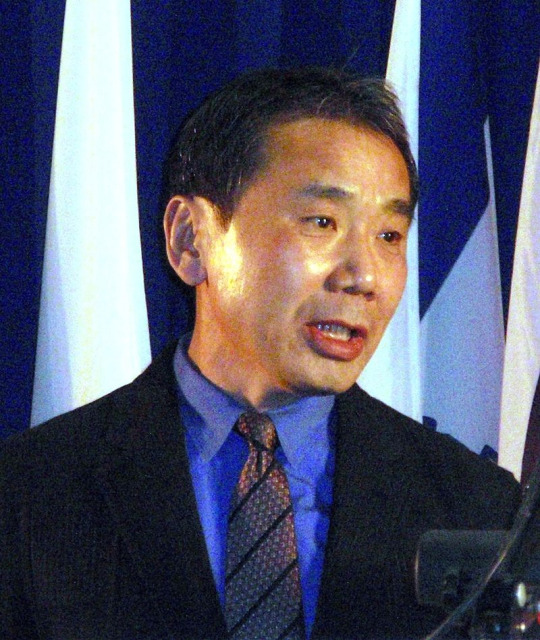
Haruki Murakami - A Japanese writer, Murakami's most notable works include A Wild Sheep Chase (1982), Norwegian Wood (1987), The Wind-Up Bird Chronicle (1994–95), Kafka on the Shore (2002), and 1Q84 (2009–10).
c.) South and West Asia - 21st Century Middle Eastern Literature encompasses a rich variety of genres and addresses human experience often through a realist approach. In the Hellenistic period literature and flourished in Western Asia. Traditional literary forms such as lists continued to be produced by the native population and were adapted by the new rulers. The works by these South and West Asian authors captures the heart of their reader, also their minds. Often dealing with controversial or emotional subject matters, these writers have a unique ability to calmly discuss or explore contentious issues.
Some South and West Asian Literature:

The Epic of Gilgamesh - The Epic of Gilgamesh is an epic poem from ancient Mesopotamia, regarded as the earliest surviving great work of literature and the second oldest religious text, after the Pyramid Texts. These independent stories were later used as source material for a combined epic in Akkadian.
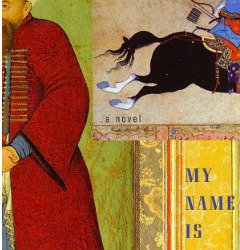
My Name is Red - My Name Is Red ��is a 1998 Turkish novel by writer Orhan Pamuk. The novel incorporates metafiction in such ways as making frequent reference to the reader and to the narrators' awareness that they are characters in a book. Each chapter of the novel has a different narrator, and usually there are thematic and chronological connections between chapters.
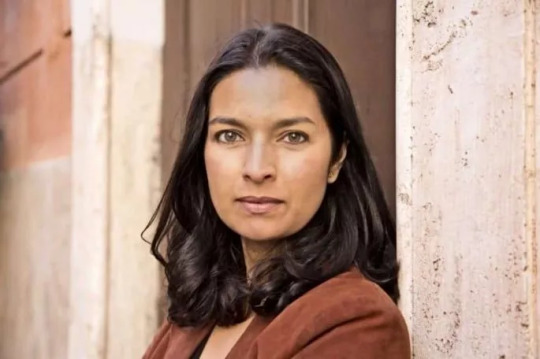
Nilanjana Sudeshna - "Jhumpa" Lahiri is an American author known for her short stories, novels and essays in English, and, more recently, in Italian. Lahiri's early short stories faced rejection from publishers "for years". Lahiri's writing is characterized by her "plain" language and her characters, often Indian immigrants to America who must navigate between the cultural values of their homeland and their adopted home.
d.) Anglo-American and Europe - The united states was one a colony of Britain, as such, its early literature was closely linked to traditional English Literature. English is a main language and a British culture and the British empire have had significant historical ethnic, linguistic, and cultural impact. American literature has produced some of the significant prose and poetry the world has seen, American literature began as an extension of English literature. It encompasses literature written in Old English, epic poetry is the common style and religious literature continued to enjoy popularity and Hagiographies were written and adapted.
Some Anglo-American Literature:
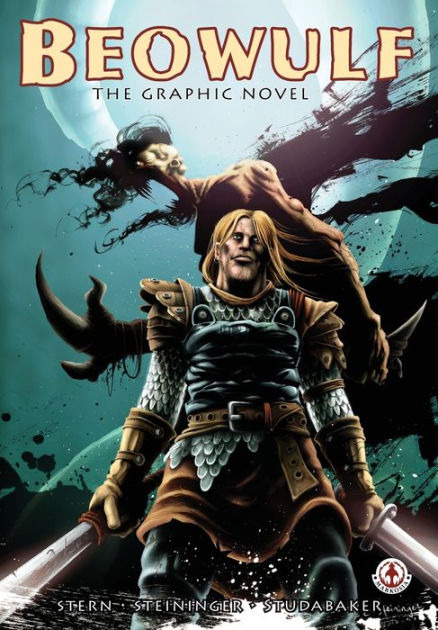
Beowulf - An Old English epic poem consisting of 3,182 alliterative lines. It is one of the most important works of Old English literature. The story is set in Scandinavia in the 6th century. Beowulf, a hero of the Geats, comes to the aid of Hrothgar, the king of the Danes, whose mead hall in Heorot has been under attack by a monster known as Grendel. After Beowulf slays him, Grendel's mother attacks the hall and is then also defeated. Victorious, Beowulf goes home to Geatland and becomes king of the Geats. Fifty years later, Beowulf defeats a dragon, but is mortally wounded in the battle. After his death, his attendants cremate his body and erect a tower on a headland in his memory.
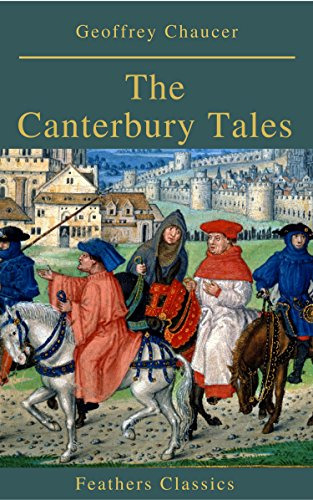
The Canterbury Tales - A collection of 24 stories that runs to over 17,000 lines written in Middle English by Geoffrey Chaucer between 1387 and 1400. The tales (mostly written in verse, although some are in prose) are presented as part of a story-telling contest by a group of pilgrims as they travel together from London to Canterbury to visit the shrine of Saint Thomas Becket at Canterbury Cathedral. The prize for this contest is a free meal at the Tabard Inn at Southwark on their return.
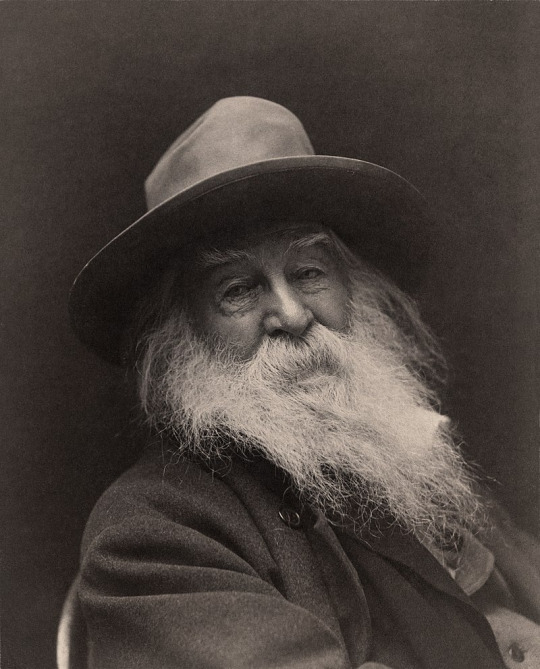
Walt Whitman - was an American poet, essayist, and journalist. A humanist, he was a part of the transition between transcendentalism and realism, incorporating both views in his works. Whitman is among the most influential poets in the American canon, often called the father of free verse. Whitman's work breaks the boundaries of poetic form and is generally prose-like. He also used unusual images and symbols in his poetry, including rotting leaves, tufts of straw, and debris.
e.) Africa - African Literature oftentimes refers back to its colonial past, and it is in this reference that its literature becomes unique, subersive and expressive. Africa’s literature includes slave narratives, protests colonization, calls for independence, African pride and their hope for their future. This literature is essential because it offers opportunity to hear the voices of African people, and to spread awareness to the one’s who’s lacking.
Some African Literature:

Things Fall Apart - The debut novel by Nigerian author Chinua Achebe, first published in 1958. Its story chronicles pre-colonial life in the southeastern part of Nigeria and the arrival of Europeans during the late 19th century. It is seen as the archetypal modern African novel in English, and one of the first to receive global critical acclaim.
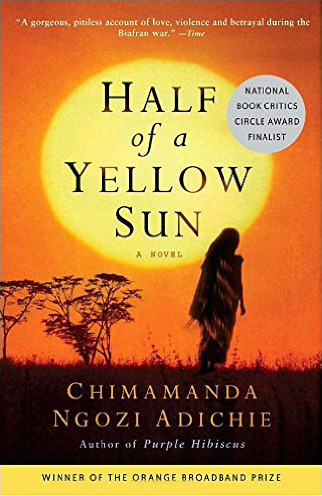
Half of a Yellow Sun - A novel by Nigerian author Chimamanda Ngozi Adichie. The story in Half of a Yellow Sun centres on the war. Adichie grew up in the aftermath of the war: "The need to write about it came from growing up in its shadow. This thing that I didn't quite understand was my legacy. It hovered over everything". She has stated she believes that many of the issues that caused the war remain today. Because none of the major political events were changed in the book, Adichie said that the book contained "emotional truth", and that the book showed the war had a significant impact upon the people of Nigeria.
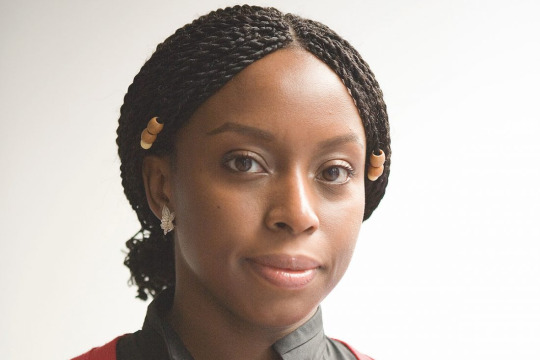
Chimamanda Adichie - A Nigerian writer whose works range from novels to short stories to nonfiction. She was described in The Times Literary Supplement as "the most prominent" of a "procession of critically acclaimed young anglophone authors [which] is succeeding in attracting a new generation of readers to African literature", particularly in her second home, the United States. Adichie, a feminist, has written the novels Purple Hibiscus (2003), Half of a Yellow Sun (2006), and Americanah (2013), the short story collection The Thing Around Your Neck (2009), and the book-length essay We Should All Be Feminists (2014). Her most recent book, Dear Ijeawele, or A Feminist Manifesto in Fifteen Suggestions, was published in March 2017.In 2008, she was awarded a MacArthur Genius Grant.
f.) Latin America - Latin American literature is characterized by mysticism, magic, uniqueness, raw creativity and wonder. Over the years, they developed a rich and complex diversity of theme, forms, creative idiom and styles. The colonial period was important because it was the beginning of the written tradition in Latin American Literature, they began to take shapes, they wrote documents that recorded the way life change after the Spanish infiltrated their lands.
Some Latin American Literature:
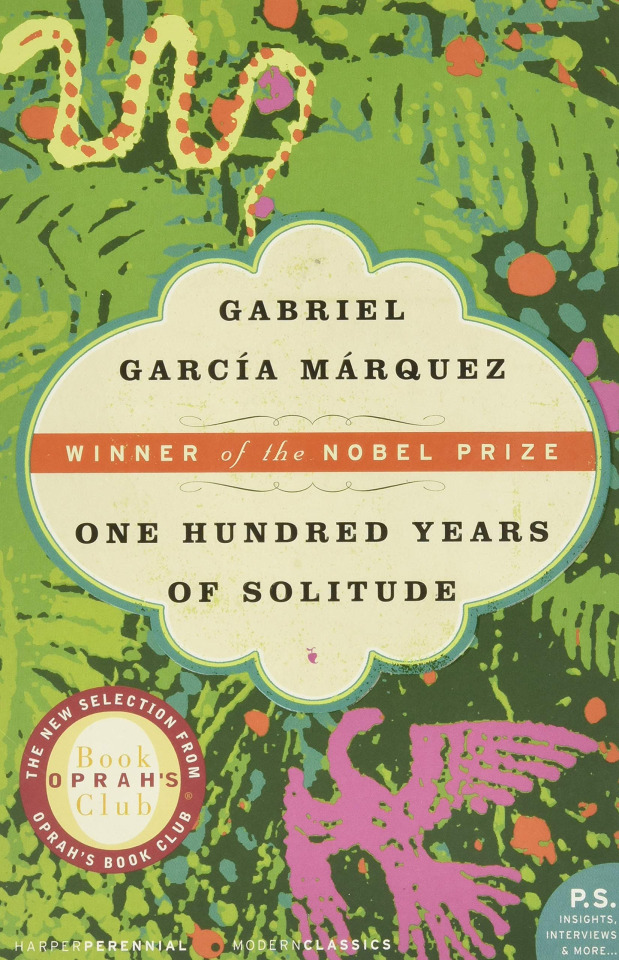
One Hundred Years of Solitude - a landmark 1967 novel by Colombian author Gabriel García Márquez that tells the multi-generational story of the Buendía family, whose patriarch, José Arcadio Buendía, founded the (fictitious) town of Macondo. The novel is often cited as one of the supreme achievements in literature. The magical realist style and thematic substance of One Hundred Years of Solitude established it as an important representative novel of the literary Latin American Boom of the 1960s and 1970s, which was stylistically influenced by Modernism (European and North American) and the Cuban Vanguardia (Avant-Garde) literary movement.
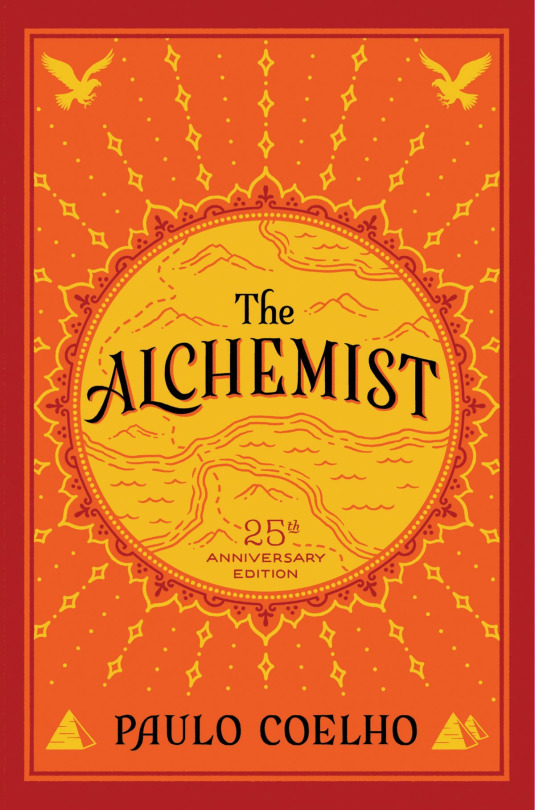
The Alchemist - A novel by Brazilian author Paulo Coelho that was first published in 1988. An allegorical novel, The Alchemist follows a young Andalusian shepherd in his journey to the pyramids of Egypt, after having a recurring dream of finding a treasure there. The book's main theme is about finding one's destiny, although according to The New York Times, The Alchemist is "more self-help than literature.

Gabriel García Márquez - Was a Colombian novelist, short-story writer, screenwriter, and journalist, known affectionately as Gabo throughout Latin America. Considered one of the most significant authors of the 20th century, particularly in the Spanish language, he was awarded the 1972 Neustadt International Prize for Literature and the 1982 Nobel Prize in Literature. García Márquez started as a journalist and wrote many acclaimed non-fiction works and short stories, but is best known for his novels, such as One Hundred Years of Solitude (1967), Chronicle of a Death Foretold (1981), and Love in the Time of Cholera (1985). His works have achieved significant critical acclaim and widespread commercial success, most notably for popularizing a literary style known as magic realism, which uses magical elements and events in otherwise ordinary and realistic situations.
6 notes
·
View notes
Text
#Tarkhan (#ਤਰਖਾਣ)
Tarkhan is a north Indian tribe which has been historically present in a Punjab and its nearby areas. Tarkhans are an ethnic minority and most of Tarkhans are followers of Sikhism and small number is a follower of Hinduism. Very small of number of ethnic Tarkhans are found in Pakistan, these Tarkhans are followers of Islam. Tarkhans are subdivided into various clans (ਗੋਤ).
Tarkhan #Occupations:
Tarkhan occupations are carpentry, blacksmithing, masonry and farming. The Lohars (blacksmiths) of Punjab are Tarkhans who work with metals and term Tarkhan-Lohar is also used. This diversity in Tarkhan occupations is very clear from Sikh history, where different Tarkhan-Sikhs had different occupations. For example: Baba Lalo Ghattaura, one of the first Sikhs of Guru Nanak was a carpenter, family of Baba BHAI Roop Chand has always been farmers, Baba Hardas Singh Bhamra made the famous nagni used to kill the drunken elephant, he was also scholar, and close associate of 10th Sikh Guru, and Mistry Des Raj Kalsi of Sur Singh played an important role in re-construction of Akal Takht after it was destroyed by Ahmed Shah Abdali. In modern day Punjab, every house, every building is made by Tarkhans, all machinery such as combines, ploughs and harvesters are made by Tarkhans including manufacturing of tractors, also welding and repairing despite being a small minority. Tarkhans are the only people in Indian sub-continent to be masters of more than occupations.
#Ancient #History of Tarkhans:
Kasgarli Mahmut was 11th century scholar from Kashgar. He explained the word Tarkhan in the following way: "It is a name given before the Islamic religion. It means prince (Bey, Umar) in Arghu language." It is clear the word Tarkhan was not pure Turkish and that it was adopted into Turkish from the old language of Sogdiana. This was proved in the Turkish dictionary Divan u Lugat it-Turk written by Kasgarli Mahmut. Sogd was a name of a nation who settled in Balasagun. These were of the Sogd race. Sogd lay between Bukhara and Samarqand. Sogdia (/ˈsɒɡdiə/) or Sogdiana was an ancient Iranian civilization.
Historian H. Beveridge in his paper titled Tarkhan and Tarquinius points out that antiquity of Tarkhan is evidenced by the fact it's etymology is lost. He also states that Tarkhan was both a personal title and the name of a tribe. Bipin Shah in his paper titled Patali of Alexander, Sack of Nagar Thatta and Arghoon rule of Sindh talks about pre-historic central asian tribe named Tarkhan. Beveridge, Isaac Taylor, C. R. Condor and J. G. R. Farlong in their writings all agree that Tarkhan, Tarkan and Tarquin are same. Lucius Tarquinius Priscus, or Tarquin the Elder, was the legendary fifth king of Rome from 616 to 579 BC. Tarkhan was used among the Hittites (1700BCE- 1200BCE) to refer the tribal Chiefs. Also, the the Kassites (1531BCE-1155 BCE) had god called Tartakhan.
Khodadad Rezakhani of Freie Universität (Berlin) in the paper titled Continuity and Change in Late Antique Irān: An Economic View of the Sasanians writes (year is 560 AD): "These are the famous Nezak Tarkhans who claimed descent from the Alkhon king Khingila (Grenet 2002: 218). We know that these Tarkhans controlled the passes across the Hindukush both to Bamiyan and also to Kabul, via the Panjshir Valley (Baker and Allchin 1991). Based on the pattern of the earlier Hephthalites, they established and controlled formidable castles on both sides of the Surkhab River in southern Tokharistan, controlling the trade and military route from Bactria to Bamiyan (Grenet 2002: 218-20)."
In Eras of Humanity by Genealogy, Brian Starr writes about Kama Tarkhan of Huns. Hiuen Tsang, a Chinese traveller of 7th century AD also mentions various Tarkhans in Indian subcontinent such as Tarkhan of Samarkand, a meeting between king and 200 Tarkhans. Across the Hindukush of the First Millennium a collection of the papers by S. Kuwayama makes the mention of Chebishi Tarkhan who along with Tafu Tegin was sent to court of Tang Dynasty by King of Gandhara in 753 AD. Tarkhan Dynasty ruled over Gilgit in 7th and 8th century and was founded by a prince from Badakhshan. Further, founders of Maglot dynasty of Nagar and Ayash dynasty of Hunza were both Tarkhan princes. Tradition traces the origin of these Tarkhans to an imaginary Kayāni prince of Persia, by name Azur Jamshid, who is said to have fled here after the Arab conquest of Persia.
The town named Tarkhan in Egypt has been a site of various archeological diggings, some which were as old as 4000 BCE and oldest woven piece of cloth called Tarkhan Dress. In the town of Chal Tarkhan (Iran) many artifacts were found belonging to Sassanian Period (224 to 651 AD). Tarkhankut is name of peninsula in Ukraine and there are various places named Tarkhan in Russia. Tarkhans have been present in Indian subcontinent atleast since 6th century AD.
The ancient history of Tarkhans is also evidenced from the origin of various Tarkhan clans, such as Ubbi was a Germanic tribe and Bahra a Arabic tribe. There are places named after various Tarkhan clans in Iran (Panesar E-Takshan, Hunejan etc) and Tarkhan clans such as Siyan and Salh are also found among Kurds. Padam and Rattan being of native Indian origin. Menander 1 a Indo-Greek king was born in place named Kalasi (Alexandria of the Caucasusn) around 165 BCE. More than 90% Tarkhans have Tarkhan exclusive clans, only a very little overlap with others.
Some Tarkhan #Personalities:
• Jugde Dalip Singh Saund: First Asian to become Judge in US and get elected in US Congress. His son Dalip Saund Jr. served in US Army as a Lieutenant during Korean war.
• Satnam Singh Bamrah: First N.B.A player from India.
• Bardish Chaggar: First female Leader of the Government in the House of Commons in the history of Canada.
• Baba Sukha Singh Kalsi: There are 7 episodes dedicated to his bravery in Panth Prakash.
• Sir Mota Singh Matharu, QC: First Asian to become judge in United Kingdom.
• Lt-Colonel Kamal Kalsi (US Army).
𝗧𝗮𝗿𝗸𝗵𝗮𝗻 #𝗣𝗼𝗽𝘂𝗹𝗮𝘁𝗶𝗼𝗻:
According to 1881 census of British India there were 263,479 Tarkhan Sikhs. In the book The Crucial Decade by S.C. Sharma writes that Tarkhans too are found in all the three religious groups in this province, on 1921 their numerical strength in the (United) Punjab was 684,000. The small population of Tarkhans is also evidenced from the fact most of villages in Punjab used to have only three to four houses of Tarkhan families.
List of Tarkhan #Villages (Incomplete):
• Bhai Rupa (ਭਾਈ ਰੂਪਾ), Thathi (ਠੱਠੀ), Siriyewala (ਸਿਰੀਏਵਾਲਾ), Nehianwala (ਨੇਹੀਆਵਾਲਾ), Dialpura Bhaika (ਦਿਆਲਪੁਰਾ ਭਾਈ ਕਾ), Towala (ਟੋਵਾਲਾ), Samadh Bhai Ki (ਸਮਾਧ ਭਾਈ ਕੀ), Ravleri (ਰਾਵਲੇਰੀ), Lakhnor (ਲਖਨੌਰ)
• Sikhwala (ਸਿੱਖਵਾਲਾ) Kotha Rajasthan (ਕੋਠਾ ਰਾਜਸਥਾਨ), Kabool Shah Khubban (ਕਬੂਲ ਸ਼ਾਹ ਖੁੱਬਣ)
• Muktsar (ਮੁਕਤਸਰ): Tarkhan Wala (ਤਰਖਾਣ ਵਾਲਾ), Akalgarh (ਅਕਾਲਗੜ੍ਹ)
• Tarkhan Majra (ਤਰਖਾਣ ਮਾਜਰਾ) (Amloh ਅਮਲੋਹ)
• Garhi Tarkhana (Macchiwara) ਗੱੜੀ ਤਰਖਾਣਾਂ (ਮਾਛੀਵਾੜਾ)
• Channian (ਚਾਨੀਆਂ) (Nakodar ਨਕੋਦਰ)
• Jallandhar (ਜਲੰਧਰ): Tarkhan Majra (ਤਰਖਾਣ ਮਾਜਰਾ), Mothanwala (ਮੋਠਾਂਵਾਲਾ)
• Hoshiarpur (ਹੁਸ਼ਿਆਰਪੁਰ ਜ਼ਿਲ੍ਹਾ):Bhattian (ਭੱਟੀਆਂ), Chatowal (ਚੱਤੋਵਲ), Halerh Ghogra (ਹਾਲੇੜ ਘੋਗ ਰਾ), Choka (ਚੋਕਾ)
• Gurdaspur (ਗੁਰਦਾਸਪੁਰ ਜ਼ਿਲ੍ਹਾ): Rangilpur (ਰੰਗੀਲਪੁਰ), Dhadiyala (ਢਡਿਆਲਾ), Sada Rang (ਸਦਾ ਰੰਗ)
• Kapurthala (ਕਪੂਰਥਲਾ): Ahmedpur (ਅਹਿਮਦਪੁਰ), Tarkhanawali (ਤਰਖਾਣਾਵਾਲੀ)
• Phagwara (ਫਗਵਾੜਾ): Lohara (ਲੋਹਾਰਾ), Ramgarh (ਰਾਮਗੜ)
• Tarkhan Majra (ਤਰਖਾਣ ਮਾਜਰਾ) (Samana ਸਮਾਣਾ)
• Tarkhan Majra (ਤਰਖਾਣ ਮਾਜਰਾ) (Sirhind ਸਰਹਿੰਦ)
• Bagrian (ਬਾਗੜੀਆਂ)
• Vakilanwala ਵਕੀਲਾਂਵਾਲਾ (Ferozpur ਫਿਰੋਜ਼ਪੁਰ)
Tarkhan #Traditons
Tarkhans engage in ancestor worship in the form of Jathere (ਜਠੇਰੇ) and Matti (ਮੱਟੀ), different Tarkhan clans have different jathere However, this practice is now dying. Members within a same clan (ਗੋਤ) are related by blood. For marriages, Tarkhan practice class endogamy but clan exogamy i.e. they marry with Tarkhans only, however outside their maternal (ਨਾਨਕੇ) and paternal (ਦਾਦਕੇ) clans.
#Ramgarhia:
Some Tarkhan Sikhs identify with Ramgarhia as Ramgarhia Misl (Ramgarhia Confedration) was the one of most powerful Sikh Misl out of 12 misls. The founder and leader of Ramgarhia Misl was Maharaja Jassa Singh Bhamra, who was a Tarkhan himself and most of soldiers in Misl were from Tarkhan tribe. Strength of Misl is evidenced from fact that Ramgarhia Misl along with other sikh generals won Delhi and it was Jassa Singh Ramgarhia who dragged the Mughal throne from Delhi to Akal Takht, where it lies even today in Ramgarhia Bungas. In the Tawarikh Darbar Sahib by Udham Singh, it is written that Maharaja Jassa Singh of Ramgarhia Misl and his son Sardar Jodh Singh together contributed Rs 5 Lakh for construction of Ramgarhia Bungas.
#References:
1. Tarkhan and Tarquinius by H. Beveridge of The Journal of the Royal Asiatic Society of Great Britain and Ireland.
2. Anatolian Iron Ages: The Proceedings of the Second Anatolian Iron Ages Colloquium held at İzmir, 4-8 May 1987
Edited by A. Çilingiroğlu and D. H. French, Page 115.
3. Era's of Humanity by Genealogy written by Brian Starr, Page 204
4. A Socio-Political Study of Gilgit Baltistan Province by Omar Farooq Zain.
5. THE WESTERN HIMALAYAN STATES by A. H. Dani.
6. A SHORT HISTORY OF AFGHANISTAN By Professor Abdul Hai Habibi, President, Historical Society of Afghanistan.
7. Across the Hindukush of the First Millennium: a collection of the papers by S. Kuwayama.
8. Continuity and Change in Late Antique Iran: An Economic View of the Sasanians by Khodadad Rezakhani of Freie Universität, Berlin.
9. FAITHS OF MAN: A CYCLOPÆDIA OF RELIGIONS BY MAJOR-GENERAL J. G. R. FORLONG, M.R.A.S., F.R.G.S., F.R.S.E., M.A.1, A.I.C.E., F.R.H.S.
10. THE HITTITES AND THEIR LANGUAGE BY C. R. CONDER, LT.-COL. R.E.
11. Patali of Alexander, Sack of Nagar Thatta and Arghoon rule of Sindh by Bipin Shah
12. PERSPECTIVES ON THE SIKH TRADITION, Edited by GURDEV SINCH, Foreword by KHUSHWANT SINGH
13. Tarkhan Nīzak or Tarkhan Tirek? An Enquiry concerning the Prince of Badhghīs Who in A. H. 91/A. D. 709-710 Opposed the 'Omayyad Conquest of Central Asia.
14. RAJ KHALSA PART - Iwritten by Giani Gian Singh.
2 notes
·
View notes
Photo
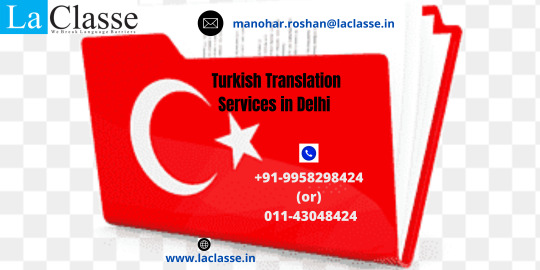
Turkish Translation Services in Delhi with La Classe
La Classe is the one of the best growing company of language translation company in India and offering best services of Turkish Translation Services in Delhi, India and other Foreign Countries at reasonable price. If you need any kind of language translation then contact with La Classe.
Read More
https://www.laclasse.in/
0 notes
Text
Tuesday, December 8, 2020
Mass Transit Faces Huge Service Cuts Across U.S. (NYT) In Boston, transit officials warned of ending weekend service on the commuter rail and shutting down the city’s ferries. In Washington, weekend and late-night metro service would be eliminated and 19 of the system’s 91 stations would close. In Atlanta, 70 of the city’s 110 bus routes have already been suspended, a move that could become permanent. And in New York City, home to the largest mass transportation system in North America, transit officials have unveiled a plan that could slash subway service by 40 percent and cut commuter rail service in half. Across the United States, public transportation systems are confronting an extraordinary financial crisis set off by the pandemic, which has starved transit agencies of huge amounts of revenue and threatens to cripple service for years. The financial collapse of transportation agencies would especially hurt minority and low-income riders who tend to be among the biggest users of subways and buses.
Some Colleges Plan to Bring Back More Students in the Spring (NYT) It was a tough fall semester for many American colleges and universities, with declining enrollment, canceled classes and sporting events, widespread Zoom fatigue and enough coronavirus-infected students nationwide to fill three and a half Rose Bowls. But many university officials say that lessons from the fall will allow them to do something many experts considered unthinkable a few months ago: bring even more students back onto campus in January and February, when classes resume for the spring. The University of California, San Diego, for instance, is making room for more than 11,000 students in campus housing—about 1,000 more than it housed in the fall. The University of Florida is planning to offer more face-to-face classes than it did before the pandemic. And Princeton University, which let only a few hundred students live on campus last semester, has offered space to thousands of undergraduates. The determination to bring back more students, even as the pandemic is surging in many states, partly reflects the financial imperative to have more students paying room and board, as well as the desire to provide something resembling a college experience. But there is also an emerging confidence among at least some college administrators that they have learned much about managing the pandemic on their campuses.
Schools confront ‘off the rails’ numbers of failing grades (AP) The first report cards of the school year are arriving with many more Fs than usual in a dismal sign of the struggles students are experiencing with distance learning. School districts from coast to coast have reported the number of students failing classes has risen by as many as two or three times—with English language learners and disabled and disadvantaged students suffering the most. “It was completely off the rails from what is normal for us, and that was obviously very alarming,” said Erik Jespersen, principal of Oregon’s McNary High School, where 38% of grades in late October were failing, compared with 8% in normal times. Educators see a number of factors at play: Students learning from home skip assignments—or school altogether. Internet access is limited or inconsistent, making it difficult to complete and upload assignments. And teachers who don’t see their students in person have fewer ways to pick up on who is falling behind, especially with many keeping their cameras off during Zoom sessions.
Congressional crunch time (Foreign Policy) The U.S. Congress heads into what Politico has described as “hell week” as lawmakers attempt to pass a coronavirus relief act, defense bill, and reach a government funding agreement before a Dec. 11 deadline. A $908 billion coronavirus relief bill, negotiated over the weekend by a bipartisan group, will include a $300 weekly federal unemployment benefit, but stops short of reissuing $1,200 checks, last seen in May. Congress is expected to pass a defense spending bill on Tuesday. However, since it does not repeal Section 230 of the Communications Act as President Trump has demanded, it may face a presidential veto.
Mexican president wants to restrict US agents in Mexico (AP) Mexico’s President Andrés Manuel López Obrador has tossed another hot potato to U.S. President-elect Joe Biden with a proposal that would restrict U.S. agents in Mexico and remove their diplomatic immunity. The proposal submitted quietly this week by López Obrador would require Drug Enforcement Administration agents to hand over all information they collect to the Mexican government, and require any Mexican officials they contact to submit a full report to Mexico’s Foreign Relations Department. “The proposal is that foreign agents will not have any immunity,” according to a summary of the president’s proposal to the Mexican Senate published Friday. In most countries, the chief DEA agent in the country often has full diplomatic immunity and other agents have some form of limited or technical immunity. “The proposal requires that foreign agents give Mexican authorities the information they gather,” according the proposed changes. Mike Vigil, the DEA’s former chief of international operations, said of the handover of all information, “That is not going to happen.”
Should a coronavirus vaccine be mandatory? In Brazil’s most populous state, it will be. (Washington Post) The words couldn’t have been any clearer. In the most populous state in Brazil, anchored by the largest city in the Americas, getting vaccinated against the coronavirus won’t be a question of personal volition. It will be mandatory. “I’ve guaranteed that the 45 million Brazilians here in São Paulo will be vaccinated, and the vaccine will be obligatory,” Gov. João Doria told reporters in a slow, deliberate cadence. “We will take legal measures if there are any setbacks in this regard.” As countries race to approve the first round of coronavirus vaccines—including Britain on Wednesday authorizing the Pfizer vaccine—governments, businesses and civil institutions are grappling with an increasingly urgent question: Should it be required? The prospect of forcing people to take it has proved to be a delicate matter, pitting individual rights against collective need, personal inclination against social responsibility. Some public health officials argue that mandatory vaccination is the only way to vanquish the coronavirus and—compared with lockdowns and travel restrictions—far less burdensome. Other experts—and the majority of government leaders—say the opposite: The vaccine can’t be mandatory. People need to make their own decisions.
EU weighs up sanctions against Turkey in east Med gas dispute (Reuters) European Union foreign ministers evaluated grounds on Monday for sanctions against Turkey over a Mediterranean gas dispute before the bloc’s leaders decide at a summit on Dec. 10-11 whether to make good on their threat to impose punitive measures. Turkish President Tayyip Erdogan said his country would not “bow down to threats and blackmail” but repeated his call for negotiations over the conflicting claims to continental shelves and rights to potential energy resources. Tensions flared in August when Turkey—a NATO ally and candidate for EU membership—sent a survey vessel to map out energy drilling prospects in waters also claimed by Greece. EU leaders told Turkey in October to stop exploring in the disputed eastern Mediterranean waters or face consequences. France and the European Parliament, which formally called for sanctions on Nov. 26, say it is time to punish Turkey, which is seen in Brussels as fuelling the dispute for domestic political reasons.
Pope: ‘No pandemic can turn off the light of Christmas’ (Vatican News) There is no pandemic or crisis that can turn off the light of Christmas, Pope Francis affirmed, as he greeted the faithful present in St. Peter’s Square and following through the media during the Sunday Angelus. Noting that the Vatican’s Christmas tree has been erected in the Square and that the Nativity Scene will soon be unveiled, the Pope said that in many homes “these symbols of Christmas are being set up to the delight of children,” and also to the delight of those who no longer are children. “They are symbols, or signs of hope, especially during this difficult time,” he said, and he invited Christians not to stop at the symbols, but to go beyond and understand their meaning: “Jesus, the love of God, who was revealed to us to reach that goodness which has been poured out on the world.” And assuring us all that no pandemic or crisis can “turn off that light,” Pope Francis said: “Let us allow it to enter into our hearts and reach out toward those who are most in need.” Thus, he concluded: “God will once again be born in us and in our midst.”
India’s farming strike (Foreign Policy) Farmers in India called for a nationwide strike starting Tuesday, vowing to intensify protests against controversial new agriculture laws. The government argues that the new laws passed in September would allow farmers to sell produce directly to corporations, but farmers—the majority of whom are smallholders—fear that it will remove safeguards from exploitation. Protesting farmers blocked roads and railways in India’s north before converging on New Delhi last month. With some 60 percent of the Indian population dependent on agriculture, the backlash poses a real test for Prime Minister Narendra Modi’s government. Talks aimed at resolving the standoff failed on Saturday, as protest leaders have rejected the government’s offer to amend the laws, calling instead for a complete repeal of the legislation.
Rules of engagement (Foreign Policy) A new report by Brown University’s Costs of War Project finds that a 2017 U.S. Department of Defense relaxation of rules of engagement in Afghanistan coincided with a 95 percent increase in the number of civilian deaths caused by U.S. and allied airstrikes compared to the previous ten years. The report also found that 700 Afghan civilians were killed by airstrikes in 2019, the most killed in any year since the war began in 2001.
New roads pave way for massive growth of Israeli settlements (AP) In the coming years, Israelis will be able to commute into Jerusalem and Tel Aviv from settlements deep inside the West Bank via highways, tunnels and overpasses that cut a wide berth around Palestinian towns. Rights groups say the new roads will set the stage for explosive settlement growth, even if the incoming U.S. administration somehow convinces Israel to curb housing construction. The costly infrastructure projects signal that Israel intends to keep large swaths of the occupied territory in any peace deal and would make it even harder to establish a viable Palestinian state. “This is not another hundred housing units there or here,” said Yehuda Shaul, an Israeli activist who has spent months researching and mapping out the new projects. “This is de facto annexation on steroids.”
Facing War, Virus and Locusts, Ethiopia’s Once-Golden Economy Loses Its Luster (WSJ) For the past decade Ethiopia has boasted of one of the world’s fastest-growing economies, welcoming billions of dollars in foreign direct investment from the U.S. and China and lifting more than 20 million people out of poverty. Now, a monthlong civil war, coronavirus lockdowns and historic locust infestations have left the once-golden economy stumbling, as it grapples with one of Africa’s most perilous debt loads, soaring inflation and the risk of a protracted insurgency. Fighting between government forces and the rebel Tigray People’s Liberation Front has paralyzed much of northern Ethiopia, shaking a nation of 110 million people long seen as a symbol of stability in a volatile region.
Earth just notched its warmest November, as 2020 closes in on record for hottest year (Washington Post) The planet just had its hottest November on record, and 2020 may end up beating 2016 for the ignominious title of the warmest calendar year. The numbers come from the Copernicus Climate Change Service, a program of the European Commission, which is the first of several temperature tracking agencies to report temperature data for November and the first 11 months of the year. According to Copernicus scientists, global average temperatures during November were 1.4 degrees (0.77 Celsius) above 1981-2010 levels, beating the previous warmest November by a large margin. Australia had its hottest November, which featured multiple severe heat waves, and persistently above-average temperatures continued in Siberia and the Arctic. Meanwhile, Norway, Sweden and England set national records for their hottest November. Cooler-than-average temperatures were seen in parts of Africa, Kazakhstan, Canada, West Antarctica and parts of the tropical Pacific Ocean, where a La Niña event is underway. The presence of La Niña tends to put a damper on global average surface temperatures, and the fact 2020 is headed toward a record or near-record finish anyway can be viewed as an indication of global warming’s increasingly overt influence.
0 notes
Text
New Post has been published on Trekking in Pakistan
New Post has been published on https://trek.pk/pakpattan/
Pakpattan

Pakpattan (Punjabi, Urdu: پاکپتّن), often referred to as Pākpattan Sharīf ( پاکپتّن شریف; “Noble Pakpattan”), is the capital city of the Pakpattan District, located in Punjab province of Pakistan. It is the 48th largest city of Pakistan by population according to the 2017 census. Pakpattan is the seat of Pakistan’s Chisti order of Sufism,[3], and is a major pilgrimage destination on account of the shrine of Fariduddin Ganjshakar, the renowned Punjabi poet and Sufi saint commonly referred to as Baba Farid. The annual urs fair in his honor draws an estimated 2 million visitors to the town.
History
Early
Pakpattan was founded as a village by the name of Ajodhan.[7] Ajodhan was the location of a ferry service across the Sutlej River that rendered it an important part of the ancient trade routes that connected Multan to Delhi.[5] Given its position on the flat plains of Punjab, Ajodhan was vulnerable to waves of invasions from Central Asia that began in the late 10th century.[5] It was captured by Sebüktegin in 977–78 CE and by Ibrahim Ghaznavi in 1079–80.[8]
Medieval
Turkish settlers also arrived in the region as a result of pressures from the expanding Mongol Empire,[5] and so Ajodhan already had a mosque and Muslim community by the time of the arrival of Baba Farid,[5] who migrated to the town from his native village of Kothewal near Multan around 1195. Despite his presence, Ajodhan remained a small town until after his death,[9] although it was prosperous given its position on trade routes.[10]
Baba Farid’s establishment of a Jama Khana, or convent, in the town where his devotees would gather for religious instruction is seen as a process of the region’s shift away from a Hindu orientation to a Muslim one.[5] Large masses of the town’s citizenry were noted to gather at the shrine daily in hopes of securing written blessings and amulets from the convent.[5]
Upon Baba Farid’s death in 1265, a shrine was constructed that eventually contained a mosque, langar, and several other related buildings.[5] The shrine was among the first Islamic holy sites in South Asia.[5] The shrine later served to elevate the town as a center of pilgrimage within the wider Islamic world.[11] In keeping with Sufi tradition in Punjab, the shrine maintains influence over smaller shrines throughout the region around Pakpattan that are dedicated to specific events in Baba Farid’s life.[12] These secondary shrines form a wilayat or a “spiritual territory” of the Pakpattan shrine.[12]
The Arab explorer Ibn Battuta visited the town in 1334 and paid obeisance at its shrine.[5] The town was besieged by Shaikha Khokhar, in 1394.[13] Tamerlane visited Pakpattan’s shrine in 1398 in order to pray for increased strength,[14] and spared the town’s inhabitants that had not fled his advance, out of respect for the shrine of the saint Baba Farid.[15][16] Khizr Khan defeated the armies of Firuz Shah Tughlaq of the Delhi Sultanate in battles outside of Pakpattan in 1401 and 1405.[17]
Mughal
The town continued to grow as the reputation and influence of the Baba Farid shrine spread but was also bolstered by its privileged position along the Multan to Delhi trade route.[18] The shrine’s importance began to outweigh that of Ajodhan itself, and the town was subsequently renamed “Pakpattan” in honor of a ferry service over the Sutlej River.[6] The founder of Sikhism, Guru Nanak, visited the town in the early 1500s to collect compositions of Baba Farid’s poetry.[19]
The shrine was extended royal patronage from the Mughal court, while Emperor Shah Jahan in 1692 bestowed royal support for the shrine’s Diwan chief and descendants of Baba Farid, who eventually formed a class of landowners known as the Chistis. The shrine and Chistis were defended by an army of devotees drawn from local Jat clans.[5]
Pakpattan Chishti State
Following the disintegration of the Mughal Empire, the shrine’s Diwan was able to forge a politically independent state centered on Pakpattan.[5] In 1757, the territory of the Pakpattan state was extended across the Sutlej River after the shrine’s head raised an army against the Raja of Bikaner.[5] The shrine’s army was able to repel a 1776 attack by the Sikh Nakai Misl state, resulting in the death of the Nakai leader, Heera Singh Sandhu.[5]
Sikh
Maharaja Ranjit Singh of the Sikh Empire seized the city in 1810, removing the political autonomy of the Baba Farid shrine’s chief.[5] He did, however, bestow the shrine with an annual nazrana allowance of 9,000 rupees, and granted tracts of land to his descendants.[20] By patronizing the shrine, Ranjit Singh increased his legitimacy of a non-Muslim ruler and helped spread his influence through the network of the smaller shrine through the Pakpattan shrine’s spiritual wilayat territory.[21]
British
Following the establishment of British rule in Punjab after defeating the Sikh Empire, Pakpattan in 1849 was made district headquarters, before it was shifted in 1852, and finally to Montgomery (now Sahiwal) in 1856.[22] The Pakpattan Municipal Council was established in 1868,[22] and the population in 1901 was 6,192. Income in the era chiefly derived from transit fees.[8]
Between the 1890s and 1920s, the British laid a vast network of canals in the region around Pakpattan, and throughout much of central and southern Punjab province,[23] leading to the establishment of dozens of new villages around Pakpattan. In 1910, the Lodhran–Khanewal Branch Line was laid, making Pakpattan an important stop before the railway was dismantled and shipped to Iraq.[22] In the 1940s, Pakpattan became a center for Muslim League politics, as the shrine granted the League privileges to address crows at the urs fair in 1945 – a favor not granted to pro-Unionist parties.[24] The shrine’s sajjada nasheen caretakers further refused to sign an anti-Partition manifesto brought to them by pro-Unionists.[24]
Modern
Pakpattan’s demography was radically altered by the Partition of British India, with the vast majority of its Sikh and Hindu residents migrating to India. Several Chisti scholars and notable families also settled in the city, having fled from regions that were allocated to India. Pakpattan thus increased in importance as a religious center and witnessed the development of pir-muridi shrine culture.[25] The influence of the shrine’s caretakers grew as Chistis and their devotees congregated in the city to such a degree that the shrine caretakers are regarded as “kingmakers” for local and regional politics.[25] Pakpattan’s shrine continued to grow in influence as Pakistani Muslims found it increasingly difficult to visit other Chisti shrines that now lay in India,[25] while Sikhs in India commemorate Baba Farid’s urs in absentia at Amritsar.[26] Pakpattan continues to be a major pilgrimage center, drawing up to 2 million annual visitors its large urs festival.[4]
Geography
Pakpattan is located about 205 km from Multan.[27] Pakpattan is located roughly 40 kilometres (25 mi) from the border with India, and 184 kilometres (114 mi) by road southwest of Lahore.[28] The district is bounded to the northwest by Sahiwal District, to the north by Okara District, to the southeast by the Sutlej River and Bahawalnagar District, and to the southwest by Vehari District.
Demographics
According to the 1998 Pakistan Census, the population of Pakpattan city was recorded as 109,033. As per 2017 Census of Pakistan, the population of city was recorded as 176,693 with an increase of 62.05% in just 19 years.
Language
Punjabi is the native spoken language but Urdu is also widely understood. Haryanvi also called Rangari is spoken among Ranghar, Rajput. Meo have their own language which is called Mewati.
Famous Food
Tosha is a special sweet which was produced first in Pakpattan.[30] It is also sold in India as a delicacy originally made in Pakpattan.
Shrine of Baba Farid
The Shrine of Baba Farid is one of Pakistan’s most revered shrines. Built in the town that was known in medieval times as Ajodhan, the old town’s importance was eclipsed by that of the shrine, as evidenced by its renaming to “Pakpattan,” meaning “Holy Ferry” – referencing a river crossing made by pilgrims to the shrine.[32] The shrine has since been a key factor shaping Pakpattan’s economy, and the city’s politics.
1 note
·
View note
Text
Daytripping in Bangkok

Santa Cruz Church in Kudi Chin Community. (Photo by Thiti Wannamontha)
Nakhonchai Air bus operator has launched a one-day Bangkok trip.
Called “Treasure Bangkok”, the package is organised every other Saturday running from Aug 17 to Dec 21.
The attractions include Wat Arun, or the Temple of Dawn, Wat Kanlayanamit, Wat Prayun, Kudi Chin Community to taste khanom farang kudi chin or the sponge cake topped with slices of sweeten sliced pumpkin, dried persimmon and raisins, the old Chinese community and its museum, and Yaowarat.
The service is operated by using a 15-seat minibus. The bus will leave its station at Nakhonchai Air bus terminal on Kamphaeng Phet 2 Road, platform A, at 8am and will return to the station around 8pm.
The package is priced at 1,299 baht per person. It includes breakfast, lunch, a Thai-language guide with an option of English speaking guide if requested. Nakhonchai Air also has a special promotion to celebrate the Mother’s Day by offering buy-one-get-one free tickets for a passenger travelling with his/her mother.
Visit facebook/nakhonchaiair.official or call 092-415-5335.
Girl Power for over 50s
The Tourism Authority of Thailand (TAT) has joined hands with partners to launch the “Girl Gang Lun La” campaign.
Although it uses the word “girl”, the target is women aged 50 up. According to TAT, the campaign focused on middle-aged women as they have high purchasing power.
TAT recommends activities, things to do and where to stay in 10 provinces including Chiang Rai, Kanchanaburi, Prachin Buri, Chanthaburi, Udon Thani, Sakon Nakhon, Pran Buri, Phuket, Surat Thani and Yala. Also offered are discounts for hotels and airlines.
Visit GirlGangLunLa.com
AIRLINES UPDATE
– Mumbai-based low-cost carrier Go Airlines has launched daily direct flights from Delhi and Mumbai in India to Bangkok.
The outbound flight from Delhi departs at 7.15am and will arrive at Suvarnabhumi airport at 1pm. The return flight to Delhi will depart at 2pm and will arrive in India at 4.25pm.
For the service between Mumbai and Bangkok, the flight departs Mumbai at 1.45pm and will arrive at Suvarnabhumi airport at 7.55pm. The return leg to Mumbai will leave at 8.55pm and the arrival time in India will be 11.30pm.
To promote the new routes, the airline has promotions including 20kg of free baggage allowance.
Visit goair.in.
– Bangkok Airways has signed a codeshare agreement with Turkish Airlines.
Under the partnership, passengers of Turkish Airlines can connect to both domestic and international flights operated by Bangkok Airways.
Currently, the network covers 16 round-trip routes from Bangkok to Chiang Mai, Chiang Rai, Lampang, Sukhothai, Trat, Koh Samui, Phuket, Krabi, Danang, Phu Quoc, Yangon, Mandalay, Nay Pyi Taw, Vientiane, Luang Prabang and between Phuket and Koh Samui. Two more round-trip routes from Bangkok to Phnom Penh and Siem Reap are now under the process of approval for the codeshare service.
Visit bangkokair.com.
– Star Alliance, the world’s largest airline alliance, has signed a partnership agreement with NEC Corporation to develop a biometric data-based identification platform.
The aim is to improve the travel experience for frequent flyer programme customers of Star Alliance member airlines.
The technology will enable passengers to check-in, use airline lounges and board the aircraft by using facial recognition technology. Passengers may be required to show their passport during security and immigration procedures.
The service will be available to customers who are members of one of the Star Alliance frequent flyer programmes and who have authorised the use of their biometric data.
Star Alliance and NEC aim to introduce the first biometric solution at a Star Alliance airport hub by the first quarter of 2020.
HOTEL DEALS & UPDATE
– InterContinental Hotels Group (IHG) plans to stop providing small plastic bottles for its bathroom amenities in all 843,000 guest rooms worldwide.
The aim is to reduce plastic waste. Currently, an average of 200 million bathroom miniatures is in use across its entire hotel estate every year.
The property brands operated under IHG are Regent, InterContiental, Kimpton, Hualuxe, Crowne Plaza, Voco, Indigo, Even, Avid, Holiday Inn, Holiday Inn Express, Staybridge Suites and Candelwood Suites.
The group of hotels and resorts will switch to bulk-size bathroom amenities. The project will be completed in 2021.
Visit ihg.com.
– Avani+Samui launches “Girls Gataway” package. The offer includes daily breakfast, a 60-minute signature treatment at AvaniSPA, a BBQ in the villa with bubbles, beach yoga session, a cocktail-making class, a night out in Chaweng with private transfers, a longtail boat trip to neighbouring Koh Madsum and a round-trip airport transfer to and from the hotel.
Prices start from 26,999++ baht for two people and two nights in a pool villa. Reservations must be made at least 14 days in advance.
Located on Phang Ka Bay in tambon Taling Ngam, the property features 58 rooms including one- and two-bedroom beachfront pool villas.
Visit avanihotels.com/samui.
– The Grand Pacific Sovereign Resort & Spa in Cha Am has launched “Hello High Season” promotion to offer a 30% discount on rooms.
The rates for a night stay starts at 1,427 baht for a Deluxe Garden View without breakfast to 3,132 baht for Deluxe Pool View with breakfast for two.
The beachfront hotel features 224 rooms including suites.
Visit sovereignresortandspa.com.
Email [email protected] if you have any comments to share.
The post Daytripping in Bangkok appeared first on Tripstations.
from Tripstations https://ift.tt/2KAGPtU via IFTTT
0 notes
Photo

Hello! I am Sanwar Tagra from New Delhi, India. I have been living and working in Bursa since the last 5 months and also been learning Turkish under Mr. Ibrahim (aka Turkish Guruji). Friendly atmosphere and open-mindedness of Guruji made our learning fun and exciting. Ibrahim Bey is the best and the coolest Turkish teacher one is likely to come across. He represents the language in a way that permeates into your mind and self-being without you even realizing it. The time spent with him until now has been very much invaluable, efficient, beneficial and full of entertainment. He combines learning and fun in a way that makes attending his classes a sheer pleasure. #onlinecourse #turkishlanguage #turkishlesson #turkishonline #online #skypelessons (at Turkey) https://www.instagram.com/p/Bye7q1glu0F/?igshid=xconycyzepqb
0 notes
Text
Brief Persian History or Persian Literature
General Description
Persian history is one of the most ancient histories of the world. It produced a number of the classical and modern poet, who worked day and night for its survival. Persian formally has spoken in Iran, Afghanistan (Dari) and Tajikistan. Therefore, more than 110 million Persian speaking persons in the world.
The Origin Persian Language
The Persian language is one of the sweetest language in the world. It was an Indo-European tongue with close similarity with the oldest language Sanskrit and Avestan ( the language used in holy books of Zoroastrian's). The language developed in Pars after the fall of Achaemenian's government. This language regularly used there from Pahlavi era to Sassanian era. The books and other literature of this era are very rare, however, Ferdowsi (a renowned Persian poet) explained it in a better way in his book (Shah Namaeh-e-Ferdowsi).
Influence of Arabic Language
Arab conquests have conquered Pars and surroundings. They started rehabilitation in the area for the welfare of the public. Therefore, the Arabic language declared as the official language. They started their religious and academic education in the Arabic language. However, Pahlavi language was spoken in private life. The Arab conquests ruled over Pars for a century and a half. In this way, a large number of Arabic words emerged in Pahlavi and a new language came into being which is called Persian.
After fall of Arab rulers, Arabic continued in Iran at small scale because the other main learning language Latin was used in Europe. In this way, the Arabic gradually decreased. Despite the facts that famous religious scholars and Muslim scientists Abu Ali Sina (Avicenna), Al-Beroni, Rhazes, Al Ghazali and many other were also using Arabic. Persian language developed rapidly and become the vehicle of literature. Moreover, it spread towards the neighboring countries. Persian poets worked a lot for its promotion and the ruling class of sub-continent takes keen interest in Persian poetry. Mughal emperor Akbar adopt Persian as an official language.
Interest of Poets in Promotion of Persian Language
Persian scholars took the keen interest in promoting of Persian language and make it easy for readers. Moreover, Persian poets have also played a vital role in its promotion. Abu Abdullah Jaffar ibn-e-Muhammad Roudaki (born in 858 CE in Panjakent, Tajikistan and died in 941 CE) and Abu Mansoor Muhammad ibn-e -Ahmed Daqiqi Tusi (born in Tus, Iran) are the most prominent Persian poets. Roudaki is generally known as the first Persian poet.
The Ghaznavid and early Seljuq Periods
Sultan Mahmood Ghaznavi was a brave Muslim king, who loves with scholars and eminent personalities. At about four hundred poets and eminent persons were attached with his office (DURBAR). The most notable poet of his presidency was Ansari (born in 961 at Balkh) Ferdowsi (born in 940 in a village Paj, near the city of Tus, Khurasan and died in 1020). Ferdowsi wrote Shahnamah in 25 years which contain complete Persian history. However, Farrukhi, Manouchehri and Asadi were also famous poets of Sultan Mahmood Ghaznavi. Sultan Mahmood Ghaznavi served his nation in the field of education. He established a lot of libraries in each and every corner of his kingdom. Al Biruni was the most popular prose writer of Ghaznavid era, who wrote "Chronology of Ancient Nations" in Arabic.
Saljuqi Era
Saljuq era is the second classical period of Persian literature. It was the golden age of Persian prose and poetry in Persian history. Kemiya-e-Saadat (The Alchemy of Happiness) written by Imam Ghazali is one the most popular prose of this era. Some of the renowned books are as under:-
Siasat Nama. The book has been written by Nizam ul Mulk, who was a minister of Alp Arsalan and Malik Shah. It contain complete art of government and solution of political problems.
• Qabus Nama. Baheeqi has explained the history of Ghaznavid era in this book.
• Chahar Maqala. Nizami wrote Chahar Maqala means four discourses.
• Kalila wa Dimna. Nasar Ullah has written this book. It contain the animal fables of Indian origin.
• Nasir-e-Khosrow.
Classical Persian Poets
Abu Moeen Hamid Uddin ibn Khosrow al-Qubadiani or Nasir-e-Khosrow (born in 1004 in village Qubadiyon, Bactria, Khorasan and died in 1088 at Yamgan, Afghanistan) was another brilliant writer of classical Persian history, who wrote more than fifteen books. However, less than half of these books have survived and available now. One of his famous book is Safar Nama, which contains the history of journey towards Egypt. He was an Ismaili Shia sect scholar, traveler and philosopher. His poetry and prose are famous for purity of language and dazzling of technical skill. The poems of Nasir are lengthy odes. Nasir wrote poems on religious and ethical topics.
Famous scholar Mirza Muhammad Qazvini says that name of Nasir Khosrow may also added in the list of top Persian poets i.e. Ferdowsi, Omar Khayyam, Anwari, Romi, Sheikh Saadi and Hafiz Sheerazi. Some of the other most prominent Persian poets are Ansari, Abu Said, Khawaqani, Nizami, Attar and Baba Tahir Uryian.
Poet of Force Theory
Omar Khayyam (Ghayas Uddin Abul Fateh Omer Ibrahim Khayyam Nishapuri) was born in 18 May 1048 at Nishapur, Khorasan and died in 4 December 1131. He was a great scholar, mathematician, astronomer and poet. Khayyam has openly criticized religious matters and personalities in his poetry. He has always referred and hailed himself as a great Sufi. The main theme of his poetry is hedonism tinged with a gentle sadness, the power of destiny and ultimate ignorance / unawareness of human beings. Therefore, his poetry was largely neglected in Iran till the end of nineteenth century on this account. However, Iranian realized the importance of Khayyam's poetry when Fitzgerald translated it in the west.
Attached Classical Poets
Sanai is another great poet of classical Persian history who adopted the style of Nasir-e-Khosrow. Muaizi, Anwari and Khaqani are the other star poets of classical Persian history. They have written numerous books in Persian language. Most of their poetry contain on panegyric. The style of Anwari is comparatively difficult from all other the poets of same era. However, Khaqani is more mannered, who respected by all. He used technical language with great skill in his poetry. All these poets were popular in Iran but less appreciated in the west due to their technical language.
Nizami (Jamal Uddin Abu Muhammad Ilyas ibn Yousaf ibn Zaki) is another bright star and Sunni poet in classical Persian history. He was born in 1140 at Ganja, Caucasus and died in 1209. He was a creative poet and known as specialist of Khamsah or Quintet (series of five romantic poetry). Nizami wrote a mystical epic "Makhzan ul Asrar" or Treasure House of Secrets, romantic poetry "Khosro-o-Shireen" and Laila-o-Majnoon, story of great Alexander "Sikandar Namah" and Haft Paikar which contain the history of Bahram Gur. These books are very popular in Iran because of its romantic, colourful and original writing style.
Abu Hamid bin Abu Bakar Ibrahim alias Farid Uddin Attar (born in 1145 in Nishapur and died in 1220 Khorasan). He was a great Sufi, religious and didactic poet in classical Persian history. Historians are on the opinion that he was born probably in 1136 (not conform). Manteq-ut-Tair is one of his most popular book. Fitzgerald translated this book as "The Bird Parliament". Attar has explained the story of birds symbolically for union of human beings with God in a great fun. He gave an example of Semorgh (bird) in his book, who wish to make their king.
Persian History in Thirteenth Century
Ashraf Uddin Mosleh Uddin Saadi known as Sheikh Saadi and Maulana Jalal Uddin Romi were the most popular Sunni Sufi poets of thirteen century in Persian history. Sheikh Saadi was born in Shiraz town of Iran. His exact date of birth is not known, however, the modern history writers of Iran says that Saadi was born in 1184 AD and died in between 691 to 694 AH. The historian says that Sheikh Saadi has spent his life in four parts. Sheikh Saadi studied for 30 years, then he travelled the world for 30 years, then he spent 30 years in writing of books and poetry and the remaining life was spent in recluse and theosophy.
Jalal uddin Rumi
Jalal Uddin Muhammad Rumi known as Maulan Rumi was born on 30 September 1207 in Balkh (presently a northern province of Afghanistan) and died on 17 December 1273. He belongs to an Arab clan, who were popular for their religious services. "MASNAVI MAANAVI" was his famous book which was completed in ten years. He known Persian, Arabic, Turkish and Greek languages.
Hameed Ullah Mostofi was also a renowned author of Persian history. He wrote history and geography. "Zafar Namah" or Book of Victory is his renowned book which comprises of 75,000 couplets. Nasir Uddin Tusi is also a well-known Persian poet who wrote on philosophy and logic. The other three popular poets of thirteenth century are Iraqi who wrote a mystical and spiritual book "LAMAAT" or Flashes.
Abdul Hassan Yamin Uddin Khosrow alias Ameer Khosrow was born in 1253 at Patiyali Sultanate Dehli, presently Uterpardesh India and died October 1325 in Delhi India. Khosrow wrote in Persian, Arabic and Hindi languages. He was famous for his sweet language and also called as "The parrot of India". At last a satirist poet Zakani is also the most favourite poet of thirteenth century.
The Fifteenth Century onwards
Fifteenth century of Persian history is rich in provision of notable historians and poets. Nizam Uddin Shami the author of Zafar Namah (a history of Taimur), Yazdi, Hafiz Abru, Khafi, Dawlat Shah and Mir Khand (author of Rauzat-us-Safa or Garden of Purity) Dawani (author of Akhlaq-e-Jalali), Kashafi (author of Kalila wa Dimna also known as Anwar-e-Subaili or the Lights of Canopus). The prominent poets of fifteenth century are Sufi Maghribi, Qasim-e-Anwar, Katibi, Nemat Ullah Wali and Jami.
Noor Uddin Abdul Rahman Jami is regarded as last eminent figure of classical Persian literature in Persian history. He was born in 1414 at Nishapur, Khorasan and died on 19 November 1492 in Herat, Afghanistan. Jami wrote more than forty five precious books. Some of his famous books are "Baharistan", "Yousaf-wa-Zulaikha", "Suleman-wa-Absal", "Lawaih", the precious pearl, and "Laila-wa-Majnoon". Persian poetry fallen into decline after the sudden death of Jami. Jame was a great loss for Persian poetry.
Hatif was another promising romantic and historical poet in Persian history. He was the promising nephew of Maulana Rumi, who deeply inspired from him. Other followers of Rumi were Asifi, Fighani (known as "the little Hafiz", Ahli and the Sufi poet Hilali. Khairati, Qasmimi, Kashi, Shani, Fasihi and Shafai are the famous Persian poets of sixteenth century.
Prominent Poets
Mirza Muhammad Ali Saeb Tabraizi, the next prominent and educated poet of seventeenth century who considered as best Persian poet after Maulana Jami in Persian history. A bright minded and original Persian poet in Persian history. He was born at Isfahan, Iran in 1602 and died in 1677. Saeb also remain attached with court (DARBAR) of Mughal emperor Shah Jehan in India but soon returned to Iran and joined the court of Shah Abbas II. He worked hard on relate of modern poetry with old forms and created a new school.
Azhar is one of his follower in eighteenth century, who was famous for tremendous prose writing. He wrote Atesh Kadah (the place of fire-worship), which contain biographies of more than eight hundred poets. Azhar also wrote a Divan and a romantic epic. He wrote a lot on history and autobiographies of poets and monarchs / rulers.
Saba was the laureate poet of second Qajar Irani emperor Fateh Ali Shah, who ruled Iran from June 1779 to October 1834. Saba was the eminent poet of nineteenth century in Persian history. He wrote a divan and Shahan Shah Namah. Mirza Habib Ullah Shirazi alias Qaani is another intelligent, outstanding and well-known poet of Qajar era in Persian history. He was born in 1223 AH in Shiraz and died in Tehran in 1270 AH, who wrote renowned book titled PARESHAN. Qaani also knows Arabic, English, French languages along with Persian language.
Modern Persian Poets or Revival of Persian Literature
Revival of Persian literature stated from early twentieth century. Prince Iraj Mirza has participated a lot in its revival. Iraj was a great and talented Persian poet in Persian history. He was born in October 1874 in Tabraiz, the capital Azarbaijan (presently east Azarbaijan) and died in March 1926. Iraj Mirza worked for freedom of women. The other prominent Persian poets of twentieth are Adib, Bahar, Lahuti, Shahryar, Aref and the poetess Parvin E'tesami.
4 notes
·
View notes
Link

0 notes
Photo

Nowadays the demand for new languages has been on the rise. Turkish is one of the new languages which has been trending for quite some few years. Learning a new language creates a new life for one's self. Seeing the Pandemic, a lot many online courses are being created. Online Turkish Classes in Delhi NCR has been one of the best classes to learn Turkish.
0 notes
Text
Turkish Language Course in Delhi

Turkish is getting widely used as the fourth most spoken communication language in the world among people. Turkish Language Classes in Noida the mother tongue of India and getting used in Nepal on large scale. In current situation Turkish people are spread out across the globe and it is getting widely used.
0 notes
Text
The adept fashion designer duo Rimple & Harpreet Narula are making their Bollywood debut in the Deepika, Ranveer, Shahid starrer Padmavati – the next in Sanjay Leela Bhansali’s legendary saga. The anticipated blockbuster has had both movie and fashion lovers talk about what will be next in Bhansali’s leading protagonists costume wardrobe. We find out about Rimple & Harpreet Narula’s filmi journey and hints on what we will expect to see in Padmavati’s costume designs.
How does it feel to be apart of the Sanjay Leela Bhansali’s Padmavati and it being your Bollywood debut? What did you enjoy the most on this journey?
Harpreet: Working with Mr. Bhansali is a fabulously inspirational experience for us as designers. He is a master of his craft, a perfectionist with a great eye for detail as we all know. The process of creating the costumes for the project has been of constant evolution, a new learning experience everyday. It is interesting for us as designers how our perception of drama in clothes has also undergone a change while working on the project; how at times “less is more” given the moment in the story line or “more is less”, how various elements need to be layered for cohesive look that is in sync with the director’s vision. Mr. Bhansali is a person whose vision grows everyday, it is fascinating how the characters he envisions become real people who we interact with everyday on the sets. Besides showcasing our creations on three of the finest muses a designer can have, we have understood that he does not want mere clothes but clothes that speak a language, express the character’s nuances and bring out the emotional journeys these characters undertake as they make their way through the narrative.
Rimple: From the very first meeting, Mr. Bhansali and his team along with the lead cast have been very warm to us. Being totally new to the ways of Bollywood, Mr. Bhansali has guided us at every step of the process, be it inputs on history or actual design elements that work on screen, the entire experience has been surreal and deeply enriching as designers.
Rimple & Harpreet Narula’s latest collection
Rimple & Harpreet Narula latest collection
Rimple & Harpreet Narula latest collection
What research did you have to undertake for the costume designs? Where did you get your inspiration from?
Since it is a period piece, we had to be extra careful when it comes to maintaining the authenticity of the costumes for it is an extremely challenging task to envision and design garments as they were worn by the royals back then as not much is documented of the same. Apart from getting the cultural and period references right, we had to come up with signature looks for all three main characters that would define their personas and set them apart in the eyes of the audience. Keeping that in mind that there is not much documentation of actual costumes of that era, we have done intensive research on the period by way of going through old travellers’ accounts and manuscripts as well as regular visits to the Calico and Jaipur museums to get the touch-feel-look right. Most of the actual samples of antique textiles and costumes from that period are dispersed all over the world in various museums and archives so our love for travel and museums also came in handy when we had to collate all the information required during the research process. Even then, actual living samples of such textiles and costumes are far and few in between so we had to refer to a lot of miniature paintings, murals and frescoes to get the nuances of the styling as close to how they used to be.
“You would find many Sri Lankan influences in Padmawati’s attire while there is a definite nod to Khilji’s Turkish/Afghan origins when it comes to his drapes and ornamentation.” – Rimple & Harpreet Narula
Sanjay Leela Bhansali blockbusters are renowned for influencing South Asian bridal trends here in the UK. Do you think Padmavati will lead in the same direction?
Evolving as a designer is all about juxtaposing various layers of your life over your craft, sometimes it is all about research and technique exploration, sometimes it is about interaction with artisans and sometimes it is more instinctual and spontaneous. Mr. Bhansali is a master story teller, having a great eye for detail, known for his visionary opulent sets and a larger than life depiction of grandeur. Besides showcasing our creations on three of the finest muses a designer can have, we have understood that he does not want mere clothes but clothes that speak a language, express the character’s nuances and bring out the emotional journeys these characters undertake as they make their way through the narrative. As designers we have explored new dimensions of detailing, our very perception of drama in clothes has changed through the process which we hope the audience would find exciting.
Could you please reveal some hints to which kind of silhouettes, fabrics, designs and colours the audience will expect to see in Padmavati?
Working on a project such as this is just not about creating stunning garments but also depicting the director’s vision for his characters and story line as authentically as possible. The clothes have to evolve in the same way the look of every character evolves through the movie. The clothes have to be in sync with the characters’ moods as well as the overall flow of the narrative, bringing out underlying emotions as well the intricate nature of the characters and the plot, so the colour palette, fabrics, surface ornamentation all had to be worked out accordingly. As there were no man-made fibres at that time nor was sericulture prevalent in the sub-continent, we have avoided using the silk or other Chinese substitutes and only used organic cottons and muls along with traditional decorative arts and techniques such as block printing and “varq ka kaam” that were prevalent then.
Ranveer Singh, Sanjay Leela Bhansali and Deepika Padukone – Photo Credit: Movie News
We have used robust, earthy, luxe-kitsch elements on a mostly warm, earthy colour palette and as designers it was very interesting since various contradictory cultures come together through the course the narrative- the Sinhalese princess who becomes a Rajput queen, the Rajput prince who goes on to become a king, the Afghan invader who becomes the Sultan of Delhi- the elements used show how every region leaves its stamp on the textiles and costumes. You would find many Sri Lankan influences in Padmawati’s attire while there is a definite nod to Khilji’s Turkish/Afghan origins when it comes to his drapes and ornamentation.
What plans do you have in the pipeline in the run up to the release of Padmavati?
As of now, we are totally consumed with the execution of this project as the looks are extremely detailed and research oriented. As designers we are always on the look out for a fresh perspective, new stimuli that fuels the creative process so perhaps once the work on the movie concludes we will explore other such avenues as they come along.
We are extremely excited for the release of Padmavati in November 2017 and to set our eyes finally on Rimple & Harpreet Narula’s creations on the silver screen! If you can’t wait till then, you can catch the talented duo and their latest collection at the Aashni + Co Wedding Show 2017 on Sunday 8th January 2017 at The Dorchester Hotel, London.
Rimple & Harpreet Narula on ‘Padmavati’ – Exclusive UK Interview The adept fashion designer duo Rimple & Harpreet Narula are making their Bollywood debut in the Deepika, Ranveer, Shahid starrer
#bollywood#Deepika Padukone#indian fashion blog#London Ki Ladki#Padmavati#Padmavati Clothing#Padmavati Costumes#ranveer singh#Rimple & Harpreet Narula#Rimple and Harpreet Narula Padmavati UK Interview#Sanjay Leela Bhansali#Sanjay Leela Bhansali&039;s Padmavati#shahid kapoor#UK Asian Fashion Blogger#UK Indian Fashion Blog#UK Indian Fashion Blogger
1 note
·
View note
